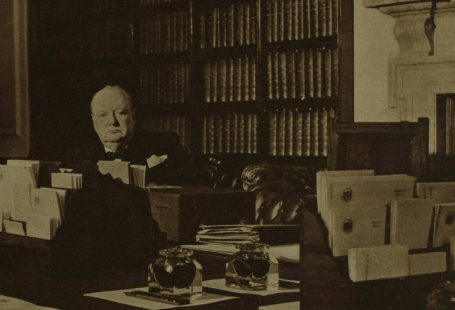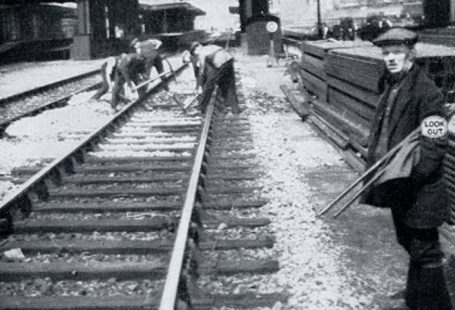In 1796 British doctor Edward Jenner demonstrated how infection from cowpox gave rise to immunity from smallpox. This led to the first vaccination in history and represented the first step in the total eradication of smallpox, the only human disease to ever be totally globally eradicated.
Edward Jenner | Illustrated London News | 27 January 1923
With vaccination again hitting the headlines during the COVID-19 pandemic, we set out to discover how Edward Jenner’s contemporaries reacted to his groundbreaking vaccination method, and to understand how it was reported on by the press at the time. Did he meet with hostility, or was his scientific breakthrough welcomed?
So read on to find out more about the early days of vaccination, how it quickly spread across the globe, and how our newspapers can be used to trace contemporary reactions to the smallpox vaccine.
Register now and explore The Archive
Variolae Vaccinae
In 1796 Edward Jenner revealed his discoveries relating to the ‘variolae vaccinae’ (literally ‘smallpox of the cow’ and more commonly known as cowpox) disease and how infection with it could result in immunity to the far deadlier disease of smallpox, with its devastatingly high mortality rates across the world. The Royal College of Physicians of London in 1807 estimated that ‘nearly one-tenth, some years more than one-tenth, of the whole mortality in London, is occasioned by the Small Pox.’
Top tip: names change over the years. When Jenner’s vaccine was introduced, it was commonly known as ‘vaccine inoculation’ before the words ‘vaccination’ and simply ‘vaccine’ were used.
You can also see how we derive the word for ‘vaccine’ from the word for the cowpox infection, vaccine meaning cow.
Jenner made his discovery by observing how milkmaids of his native Gloucestershire, once infected with the mild disease of cowpox, were then rendered immune to smallpox. To test his theory he inoculated his gardener’s eight-year-old son, James Phipps, with cowpox, and then with smallpox. Phipps did not develop smallpox, and Jenner’s theory had been proved.
Edward Jenner inoculating James Phipps | Illustrated London News | 27 January 1923
Some three years later in 1799 The Scots Magazine is reporting on Edward Jenner’s book, An Enquiry into the Causes and Effects of the Variolae Vaccinae. It explains what the cowpox infection is, and how exposure to it results in immunity to smallpox:
The grand point, however, of this distemper is, that persons who have had the cow-pox, and who have not had the small-pox, are rendered incapable of taking the latter. If the cases related by Dr. Jenner be not sufficient to convince strict reasoners, and satisfy timorous minds, they are at least more than sufficient to render the fact extremely probable.
Already, there is strong support for Jenner’s new ‘vaccine inoculation’ – enough, at least, to ‘satisfy timorous minds.’
‘The Happiest Effects’
And by 1799, Edward Jenner’s vaccine inoculation was already beginning to be practiced not only in Great Britain, but across the world. Saunders’s News Letter in August 1799 relates how since Dr. Jenner’s ‘experiments and observations on the Cow Pox’ had been made known, ‘the practice of inoculation with vaccine matter has become general, and has been attended with the happiest effects.’
Edward Jenner’s home at Berkeley, Gloucestershire | Illustrated London News | 27 January 1923
The newspaper reports how Dr. Pearson, of Leicester Square, and his colleague Dr. Woodville, had between the 20 January and 12 March 1799 ‘inoculated one hundred and sixty patients, from two weeks to forty years of age, with the cow-pox.’ The most important result of this, other than the patients not getting ‘dangerously ill’ from the cowpox, was that ‘none of the patients…hitherto inoculated for the small-pox, subsequently to the vaccine disease, took the infection.’
Meanwhile, by October 1799 Edward Jenner’s nephew was advertising the ‘Inoculation of the Vaccine Disease‘ in the Bath Chronicle and Weekly Gazette, boasting of his ‘most ample experience in this inoculation’ and how he proposed to ‘extended the advantages of it to the inhabitants of Bath.’
Jenner promises that the inoculation is ‘never fatal‘ whilst also describing how it has been taken up by the first families of the land:
The mildness and security of this mode of Inoculation, have induced its adoption by many families of the first rank; an example which calls loudly for Imitation, particularly at a period when the natural Small-Pox is making the most fatal ravages.
Bath Chronicle and Weekly Gazette | 31 October 1799
If the upper classes were seen to be adopting the smallpox vaccination, then that could be seen as the highest sign of approval. And indeed, an article in November 1799 in Saunders’s News-Letter echoes this approval, the writer remarking how ‘The advantages which the Jennerian, or Vaccine Inoculation, will secure to mankind, are incalculable.’
It goes on to relate how ‘near three thousand persons have been inoculated in London and its environs, including the children of many of the first families in the kingdom.’ Meanwhile in Gloucestershire one Doctor Marshall had ‘inoculated upwards of four hundred persons, the greater part of whom have been fully exposed to the contagion of the small pox with impunity.’ Doctors in Edinburgh had ‘made it known in Scotland,’ whilst Doctor de Carro and Doctor Eerro of Vienna had introduced it to their own country ‘by inoculating their own children.’
Illustrated London News | 27 January 1923
This early success of the smallpox vaccine caused the writer in Saunders’s News-Letter to throw the weight of his approval behind it:
In short, the writer of this paragraph, who has been attentively watching the progress of the Vaccine disease, can with confidence assert, that when properly conducted, it possesses the powers of completely destroying the susceptibility of the human constitution for the small pox, without creating any serious indisposition.
On The Highest Mountains – In the Deepest Valleys
Meeting with such success, the method of vaccine inoculation quickly spread across the globe. Indeed, the Staffordshire Advertiser actually published ‘Dr. Jenner’s Instructions for Vaccine Inoculation’ in February 1802 (not for the squeamish!):
To obtain the virus let the edges of the pustule be gently punctured with a lancet in several points. It will gradually ooze out, and should be inserted upon the arm about midway between the shoulder and elbow, either by means of slight scratch, not exceeding the eighth part of an inch, or a very small oblique puncture.
In July 1802 the Hampshire Chronicle is reporting how ‘there are uniform accounts from all parts of France in favour of the vaccine,’ with success being seen in Catalonia, Spain, where ‘7000 persons were inoculated in nine months:’
On the highest mountains, and amidst the severest cold – in the deepest vallies, and amidst the greatest heat – the inoculation has been attended with complete success.
Statue of Edward Jenner at Boulogne | Penny Illustrated Paper | 1 July 1871
By July 1806 Lord Henry Petty addressed parliament discussing the success of the vaccine inoculation, ‘which had checked in a great degree the progress of that dreadful malady which had spread such ravage and desolation over the world,’ as reported in the St James’s Chronicle. He describes how in 1799 it was ‘generally introduced to America,’ and how ‘In 1801 it was practiced all over the continent of Europe with the happiest effect.’
Lord Petty also gave the House some fascinating statistics relating to the impact of the vaccine inoculation, first from Vienna, and then from London:
In the year 1802 (the first of the Vaccine Inoculation) only 61 died of the Small-Pox. In the year 1803 the number was reduced to 27, and in the year 1804 there were only 2.
In London, the average deaths by the Small Pox for six years before the discovery was 1811. The first year, however, that the Vaccine was introduced it fell to 611.
Such success drew support from Lord Petty’s honourable friends; William Wilberforce calling it a duty of Government ‘to protect the people’ from smallpox, ‘as well as every other species of contagion or pestilence, as far as wise regulations could do it.’
Fleets and Favours
By February 1807 the Oxford University and City Herald is reporting how the ‘physicians of the fleet and of the army have now generally adopted the practice of vaccination,’ with vaccination also being ‘introduced into Gibraltar, Minorca, and Malta, with the most happy success.’
The same report details how ‘The Physical Society of Guy’s Hospital has furnished a testimonial in favour of the discovery,’ with the special diploma presented to Edward Jenner, which was ‘highly expressive of his merit for the discovery, and the candour with which he had communicated it the world.’
Edward Jenner, aged 65 | Illustrated London News | 27 January 1923
Jenner was also honoured by the Empress Dowager of Russia, Maria Feodorovna, who ‘favoured him with a letter, fully expressive of her acknowledgement for the discovery, accompanied with a valuable diamond ring.’
Meanwhile other royals were promoting vaccination, the King of Prussia encouraging ‘vaccination throughout his dominions, and as proof of believing in its astonishing efficacy, he first submitted his own family to undergo the operation.’
‘A Dangerous and Sinful Practice’
But there were some, like the anti-vaxxers of today, who were not convinced by the new vaccination method which was being taken up across the world. The Oxford University and City Herald in February 1807 reports how:
The first reports of the vaccine inoculation in London created violent suspicion of its efficacy, which was considerably strengthened by the insidious and malevolent industry of many artful and ambitious individuals, whose ignorance prompted them to attempt the suppression of a discovery too vast for their genius to comprehend.
Lucas Pepys, in his report for the Royal College of Physicians of London, detailed in the Morning Chronicle, builds on this, writing how:
A few indeed have stood forth the adversaries of Vaccination, on the same grounds as their predecessors who opposed the Inoculation for the Small Pox, falsely led by hypothetical reasoning in the investigation of a subject which must be supported or rejected, upon facts and observation only.
Inoculating for smallpox was not new; variolation (inoculating with smallpox itself) had been practiced in Africa and China for hundreds of years. It was also practiced in Turkey, where it was observed by Lady Mary Wortley Montague in the early 1700s. It was Lady Mary Wortley Montague who is credited for bringing the practice to Britain. She had her young son Edward inoculated in 1718, whilst in 1721 prisoners in Newgate were also inoculated. The Newcastle Courant carries the following report of this:
The innoculating of the Criminals in Newgate, goes on with good Success, and draws abundance of our young Surgeons daily thither, to see the same perform’d.
Newcastle Courant | 19 August 1721
But elsewhere, the practice of inoculation was decried. In July 1722 ‘the Rev. Mr. Massey preach’d an excellent Sermon at St Andrew’s Holborn, against the dangerous and sinful Practice of Innoculating the Small-Pox.’ The Reverend Mr. Massey was not alone; the Stamford Mercury in 1724 reports how the Parisian ‘School of Physick’ produced a dissertation ‘against the Practice of Innoculating the Small-Pox.’
Meanwhile in October 1725 an ‘Eminent Surgeon at Paris’ Mr Du Bois stated that ‘the Innoculation of the Small Pox [is] a pernicious and extravagant practice.’ Du Bois claimed to be able to cure smallpox himself, through a mixture of opening windows, shifting the patient and changing their bed. Apparently he had cured ‘above fifteen hundred people’ via this method.
In 1728 the Caledonian Mercury reports on the illness of a ‘Son of Mr Heathcote who married the Earl of Macclesfield’s Daughter, having been lately innoculated with the Small Pox.’ The newspaper hopes that this ‘will be sufficient Warning to our Nobility and Gentry, and put an entire Stop to a Practice so fatal in our Climate.’
The problem was with this kind of inoculation was that it could be, and often was, deadly, so no wonder it had its opponents. But with the success seen with Edward Jenner’s vaccine, did the naysayers hold sway?
Vaccination Vindicated – A Reply to Anti-Vaccinists
The Star (London) in 1806 was advertising two books supporting vaccination, one A Reply to the Anti-Vaccinists and the other Vaccination Vindicated:
Vaccination – This day was published, in 8vo. price 2s. – A Reply to the Anti-Vaccinists by James Moore, Member of the Royal College of Surgeons, in London.
Vaccination Vindicated – This day was published, price 1s – Vaccination Vindicated against Misrepresentation and Calumny, in a letter to his Patients. By Edward Jones, Member of the Royal College of Surgeons, and Surgeon to the Montgomeryshire Volunteer Legion.
Star (London) | 13 February 1806
Vaccination had some vociferous supporters, amongst journalists and doctors alike. The Oxford University and City Herald contains this impassioned plea about the benefits of vaccination:
Before we close, we cannot omit giving our opinion of its being the duty of every parent, indeed of every person entrusted with the care and preservation of their own offspring, or of such infants as may be submitted to their charge, to extend the beneficial effects of vaccination.
Meanwhile Lucas Pepys for the Royal College of Physicians of London writes how his organisation felt ‘it their duty to recommended the practice of Vaccination,’ convinced that ‘the public may reasonably look forward with some degree of hope to when all opposition shall cease, and the general concurrence of mankind shall at length be able to put an end to the ravages at least, if not to the existence of, the Small Pox.’
Administering the smallpox vaccine in Natal, South Africa | The Graphic | 21 September 1895
Such further opposition could be found in the form of MP Mr. Rose, who as reported in the Star (London) in June 1808, noted the ‘mortality which had taken place at Ringwood, and which was alleged to have arisen from Vaccination.’ He expressed his belief that vaccination was not ‘in every case an infallible preventative of Small Pox.’
However, the sad incident at Ringwood was a result of patients being ‘inoculated with matter of a spurious nature,’ and Mr. Rose found himself contradicted by his fellow M.P.s.
Annihilation
By 1807, according to the Morning Chronicle, ‘In the British Isles some hundred thousands had been vaccinated,’ with upwards of 800,000 receiving the vaccine in the East Indies. Indeed, one Mr. Fuller, responding to Mr. Rose in parliament, stated how ‘at Calcutta the Small Pox was entirely annihilated by the introduction of Vaccination.’
In London, you could get your smallpox vaccination free of charge. An advertisement in the Morning Advertiser in November 1807 states how for ‘such persons as are desirous of protecting themselves, and families from this dreadful disease, may receive Vaccine Inoculation, free of expense.’ It goes on to list the multiple locations across London from where the vaccine was being administered.
London vaccination ‘stations’ | Morning Advertiser | 9 November 1807
Meanwhile in Dublin, the Dublin Evening Post in 1808 reports how the Dispensary for Infant Poor and Vaccine Inoculation had vaccinated ‘13,503 persons of all ages,’ again for free.
As Lucas Pepys writes ‘Professional men have submitted it to the fairest trials, and the public have for the most part received it without prejudice.’ It was this openness to this new medical discovery, and the way it was tested by medical practioners, which allowed hundreds and thousands of lives to be saved, paving the way for the World Health Organisation’s massive smallpox vaccination drive in 1967, which ensured the total eradication of smallpox across the globe by 1979.
A smallpox vaccination centre at Karachi, Pakistan | Illustrated London News | 20 January 1962
Throughout the month of January The Archive will be taking a look at all things medical – so watch out for more blogs like this, and posts across our social media channels.



















